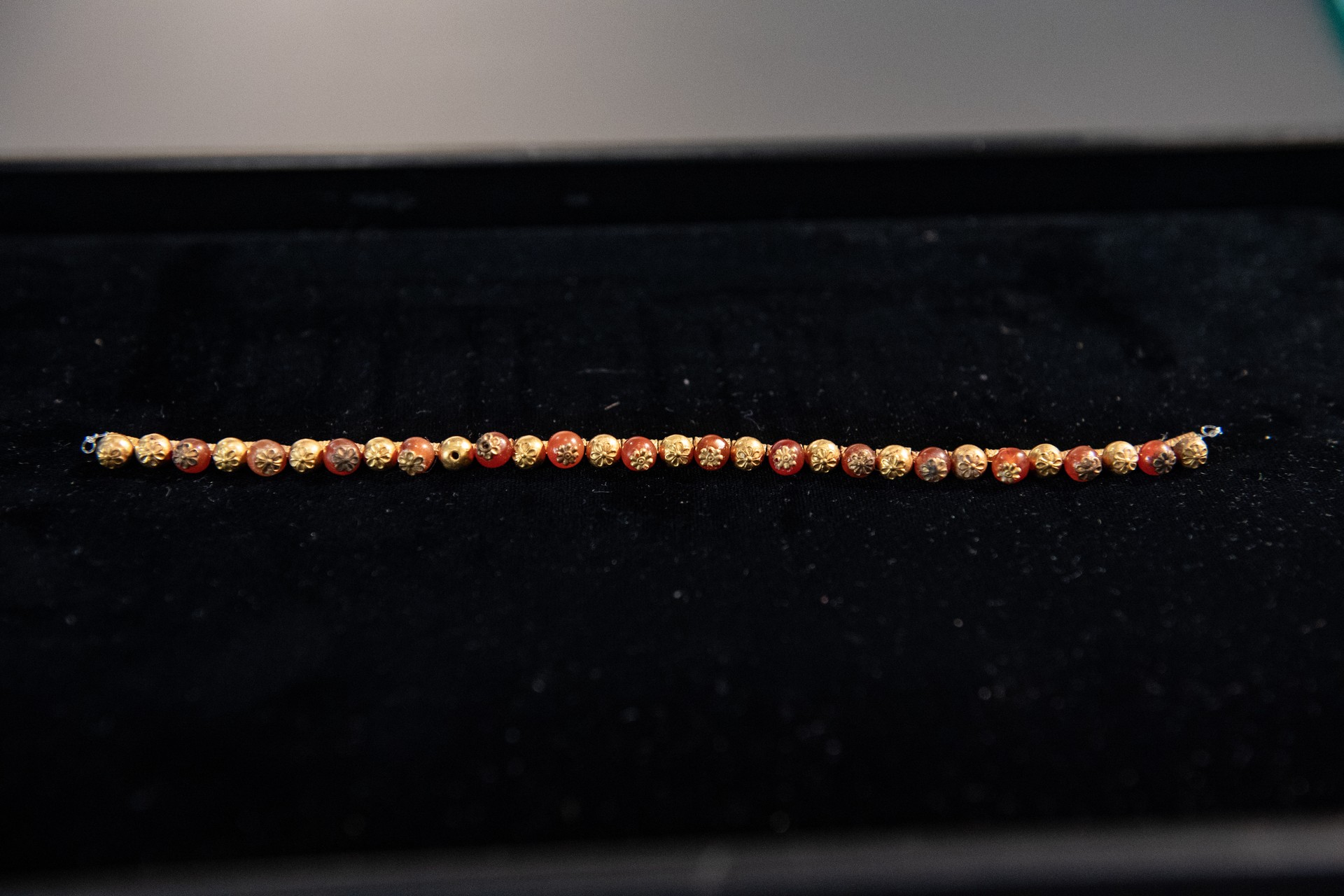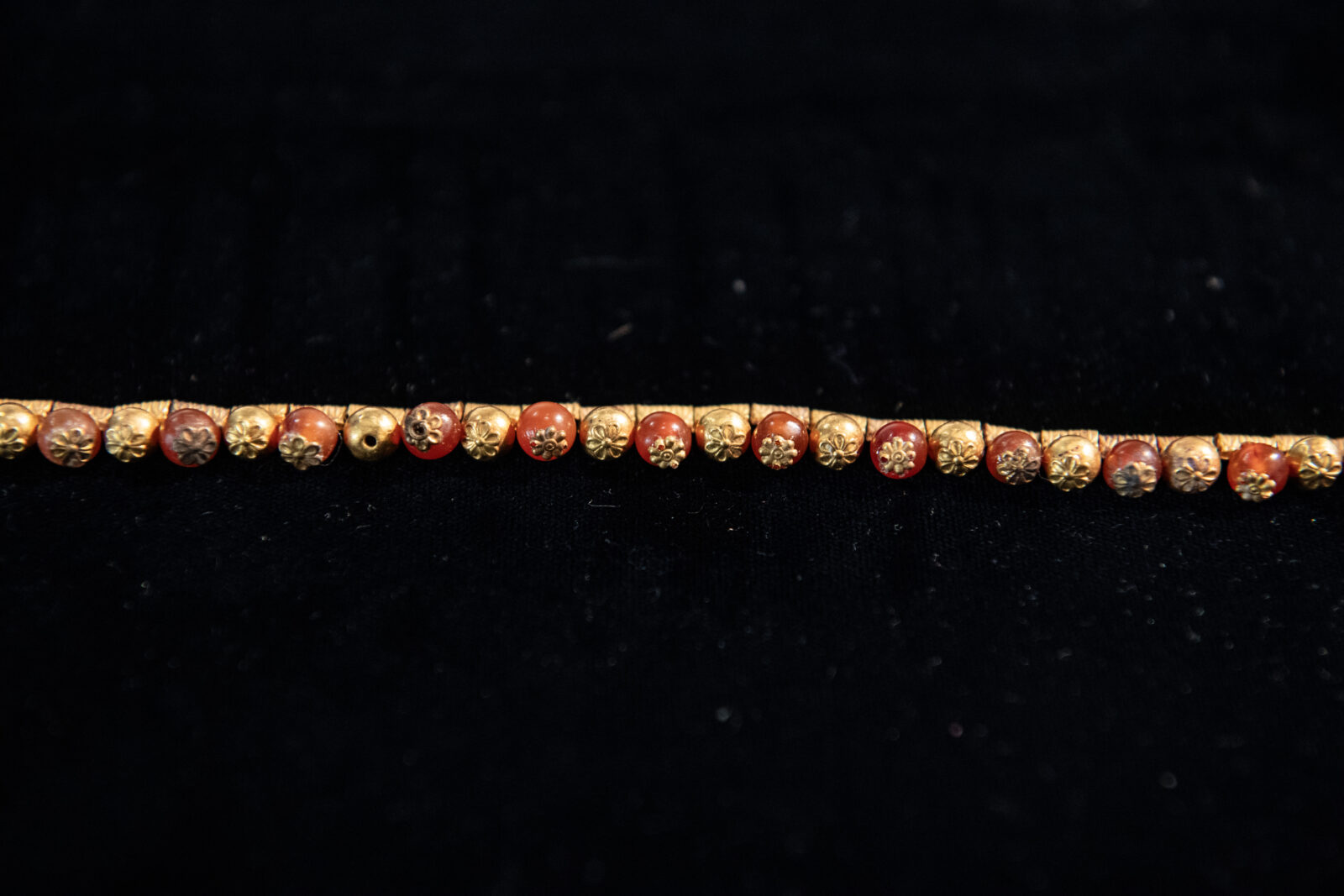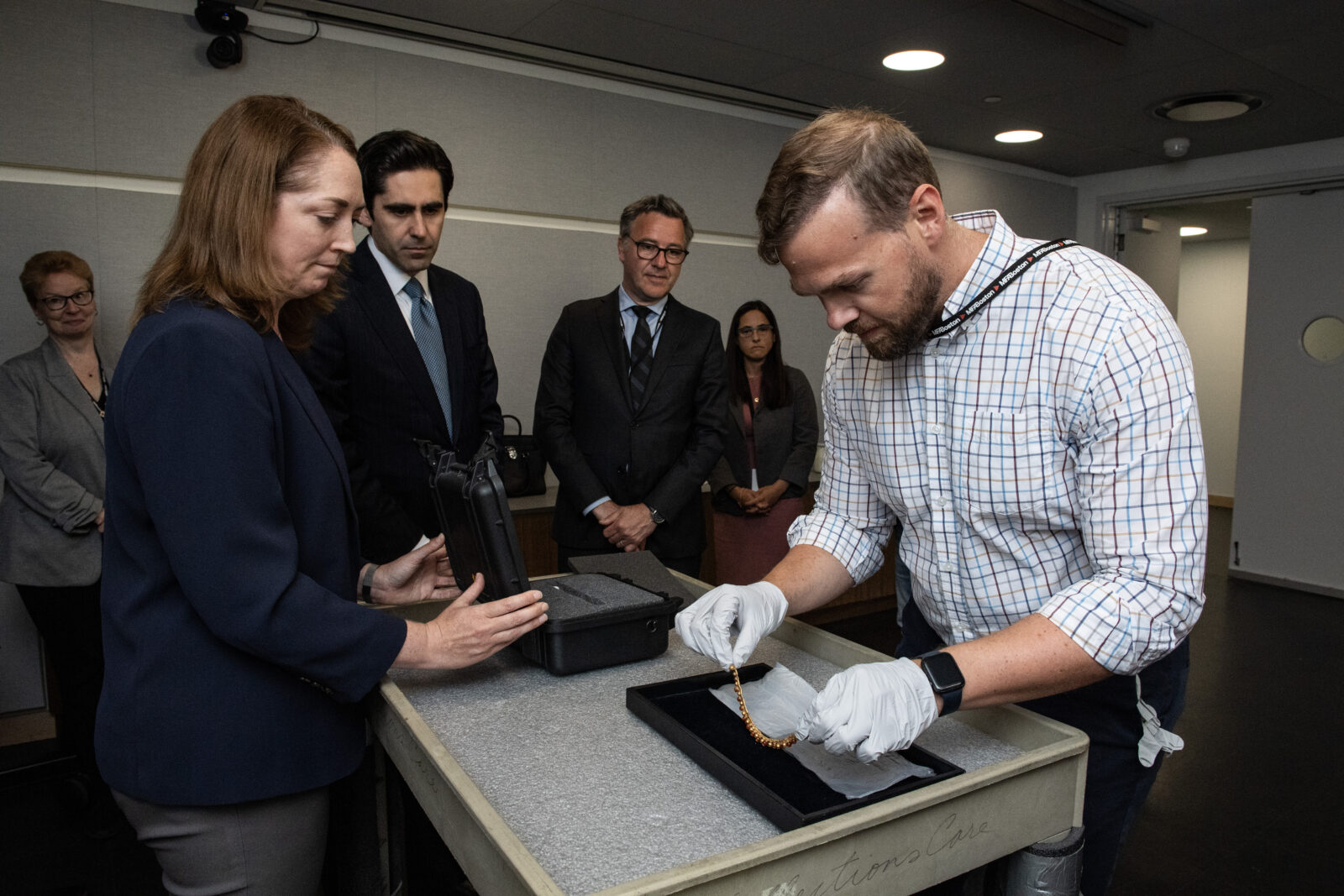
In a significant cultural victory, Türkiye has successfully reclaimed a priceless historical artifact—an ancient gold necklace dating back 2,700 years. The Bintepeler Necklace, adorned with pomegranate-shaped gold and red agate beads, has been repatriated following negotiations with the Boston Museum of Fine Arts.
Türkiye's Minister of Culture and Tourism, Mehmet Nuri Ersoy, announced the triumph on social media, highlighting the growing success of the country's efforts to retrieve its cultural heritage.

“In 2024 alone, we have repatriated 20 historical artifacts. With the return of the Bintepeler Necklace, we raise this number to 21,” he said. Ersoy also expressed gratitude to Türkiye's consulates in Boston and New York for their support during the process.

The Bintepeler region, located in Türkiye's Manisa province, is home to an impressive collection of 90 tumuli—ancient burial mounds—built by the Lydians, the civilization credited with inventing coinage. These tombs, dating back approximately 2,500 years to the 7th and 6th centuries B.C., represent a significant chapter in Anatolian history.
The largest of these burial mounds is attributed to the famous Lydian King Alyattes II. With a diameter of 355 meters, a height of 69 meters, and a circumference of 1,115 meters, it stands as a colossal monument to the ancient king. Another notable tumulus, believed to belong to King Gyges, is currently being excavated by an American team, continuing the exploration of Lydian history.

Lydia, ruled by three dynasties—Atyads, Heraclids, and Mermnads—experienced its golden age between 700 and 550 B.C., under the Mermnad dynasty. The kingdom's name derives from Gyges, the first king of this dynasty. Lydia's influence extended far beyond its borders, leaving an indelible mark on world history with its invention of coinage.
However, Lydia's reign ended in 546 B.C., when the Achaemenid Empire captured its capital, Sardis, ushering in 200 years of Persian rule over Anatolia. Despite its fall, Lydia's legacy, particularly its economic innovation, continues to be celebrated.
The return of the Bintepeler Necklace not only enriches Türkiye’s cultural heritage but also reignites interest in Lydia's storied past, underscoring the enduring importance of preserving and reclaiming history.